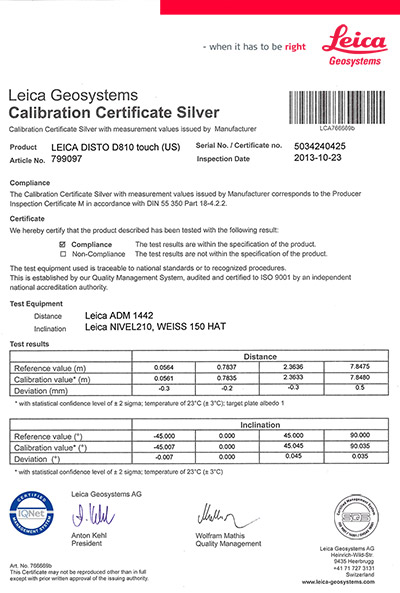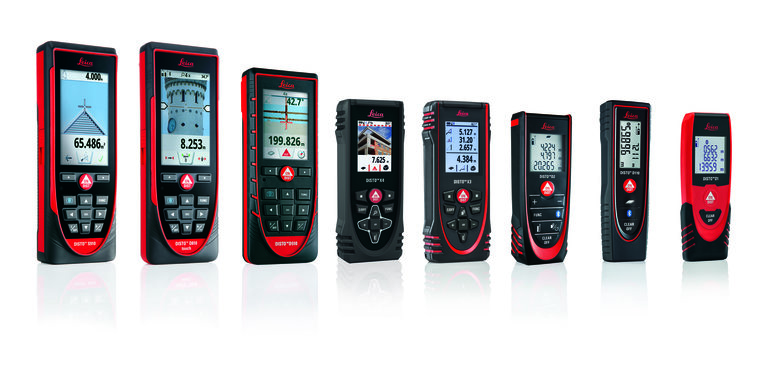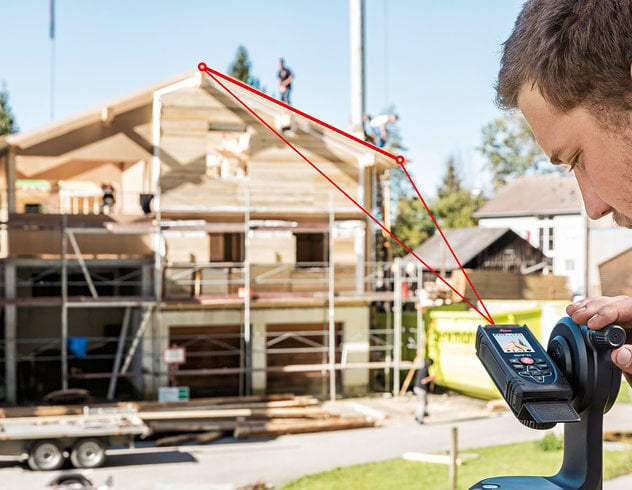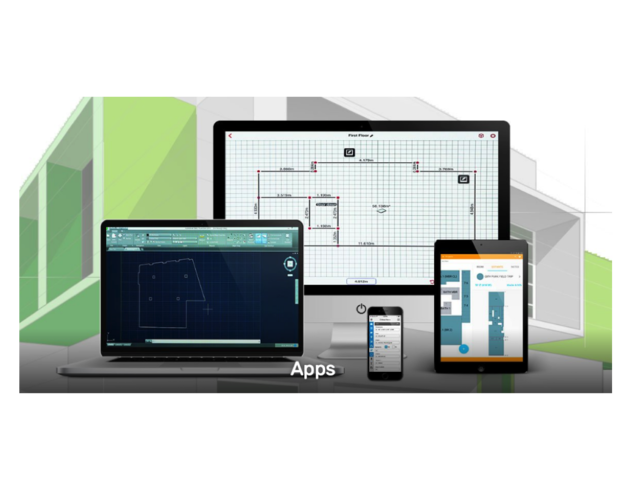
Maybe you dropped your DISTO. Maybe you've had your DISTO for a while and are wondering if it is still accurate. Maybe you are just amazed at how it works and you are a little skeptical that it is really that accurate.
Whatever your motivation, the first thing you need is a reference. The best source is the calibration certificate that came with your DISTO from the factory.
Each and every DISTO, regardless if it is a €1,399 S910 or a €159 D110, is tested and the deviation for a series of reference measurements is recorded on a certificate that is included in the box.
If you no longer have your calibration certificate, you can go by the Typical Accuracy, which you can find in the user manual. Or, if you have a current model, in the spec table on the product page.
Distance Measurement Calibration: Determining Typical Accuracy for Your Device
Optional: Download our calibration aid spreadsheet and let us do the math.
- Establish a constant baseline. Pick something easy to get to, like a window frame or the length of a room, that is between 1 and 10 meters away. Determine the length of your baseline with an accurate steel tape. If you are an ISO certified user and are performing this calibration to certify a DISTO to ISO standards, the tape must be traceable to a national standard (a class I or II steel tape with Roman stamp is sufficient). Be careful that the hook at the end of the tape does not introduce any errors.
- Take at least 10 measurements from a fixed point. A method of making sure the DISTO doesn't move between shots is highly recommended. A tripod is not necessary, but helpful for this process.
- Average the measured values and use the average to determine the systematic deviation from your baseline value. Systematic deviation is the absolute value of (average value - baseline value).
- Calculate the Standard Deviation Using the individual measurements (Xi), the average and the number of measurements (n).

- Calculate the Typical Accuracy by adding the systematic deviation to 2x the standard deviation.



